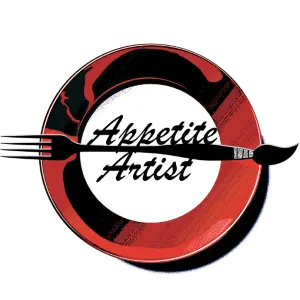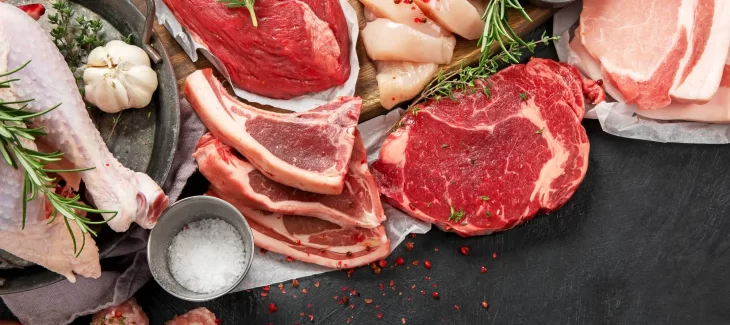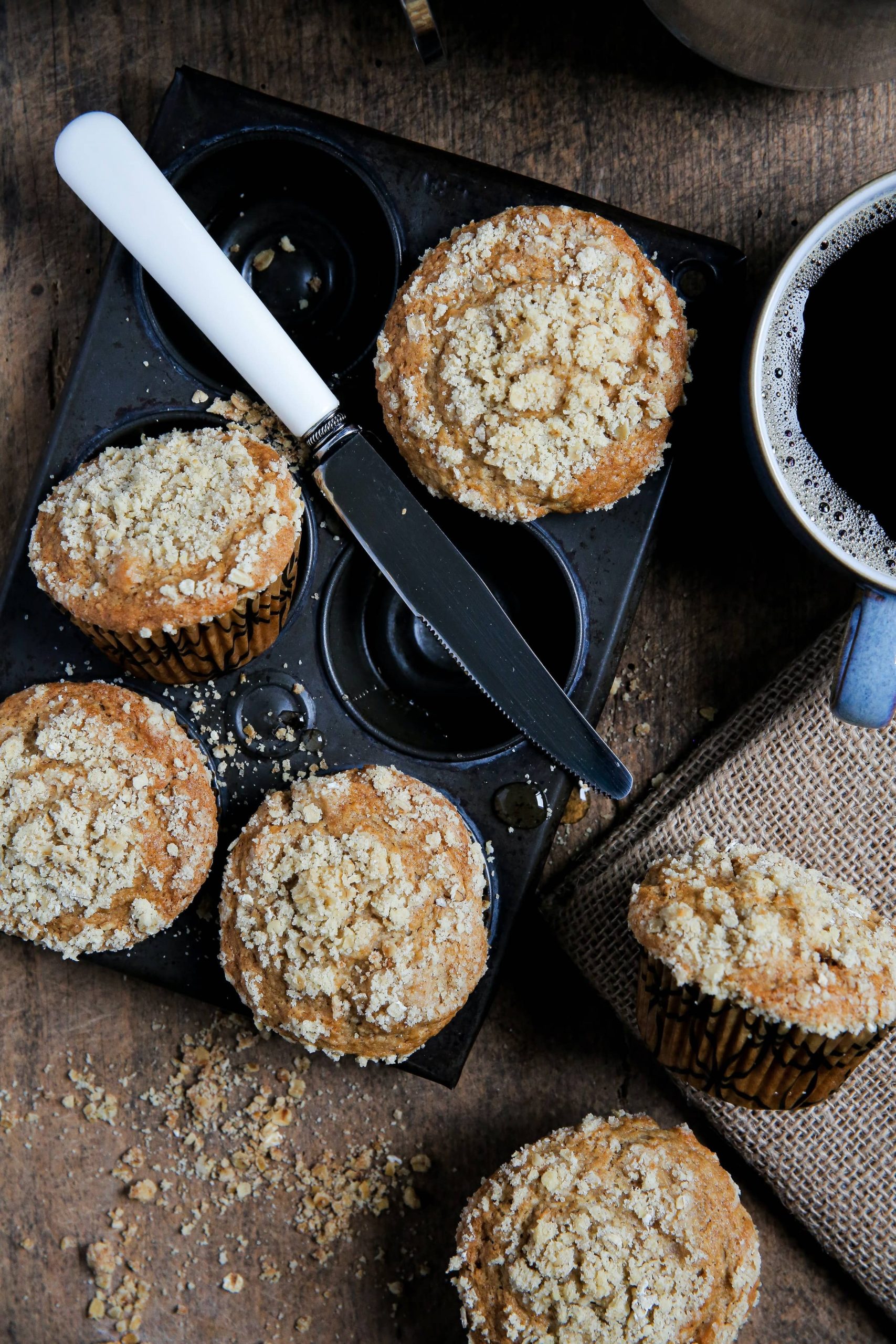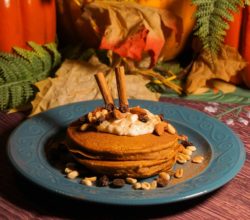Eating lean meat first thing in the morning is a great way to get your protein and vitamin intake for the day. That being said, there are lots of different types of meat that may or may not be helpful to you to have as a breakfast meal. Healthy breakfast meats should have a nice balance of vitamins and fiber, as well as having plenty of high-quality protein. Fatty meats are very delicious but should only be eaten in moderation.
Pairing lean meats with high-fiber foods like oatmeal and fruit salad gives you a hearty boost in fiber intake. This is helpful if you want to stay full throughout the day. However, eggs are not a recommended side for your meat because they can raise your cholesterol levels quite high. Most food pairings for healthy breakfast meats serve the purpose of providing extra health benefits that are not found in protein-rich meat.
Health Risks/Considerations
It is important to discuss the potential health risks of eating certain kinds of meat before going further.
Red meat in particular has specific health risks that are important to know. Generic/conventional red meat found in most stores are USDA certified, but it doesn’t mean they are totally clean. They may be cured with lots of sodium or have antibiotics, preservatives, or steroids in them. Overconsumption of meat products and processed meats in general lead to an increased risk of heart disease, cancer, premature death, and even diabetes, according to a post from Harvard University.
Additionally, consuming raw or undercooked meat may increase your chances of food poisoning. Salmonella, for example, is an infective bacteria that is able to contract from undercooked meat. Salmonella causes diarrhea, fever, and stomach cramps for 1-2 weeks. To avoid food poisoning from raw or undercooked meat, you must ensure that your meat cooks to a certain internal temperature during cooking. All cuts of chicken, for example, must cook to an internal temperature of 165°F (74°C).
Finally, avoid generic Walmart-esque meat brands and purchase all your meat from reputable, trusted suppliers. Red meat should either be prime, organic, and/or grass-fed. Fish like salmon are generally healthier when wild-caught, as opposed to being farm raised. In general, try to consume no more than a quarter pound of meat per day, and try to limit your intake of meat to no more than 4 times per week. You will be doing your personal health a huge favor!
Good Sides For Healthy Breakfast Meats
Pair your breakfast meat with plant-based foods for the most optimal nutrition you can get. This is integral if you’re doing a paleo diet! So, what are the best foods you can pair your meat with when sticking to the paleo diet?
- Fruits, like bananas, strawberries, and grapes. All fruits contain healthy antioxidants and vitamins that complement their high sugar count. They work well with lean meat because they contain almost all the vitamins and minerals that meat lacks. These nutrients include vitamin C, potassium, zinc, manganese, soluble fibers, and many more.
- Vegetables, like carrots, celery, and eggplant. Just like most fruit, vegetables have plenty of vitamins, minerals, and healthy sugars. Vegetables tend to be lower in sugar and calories than fruit, so they are good at preventing blood glucose spikes. Potatoes in particular have insoluble fiber, which is great for weight loss.
- Nuts offer healthy fats that meat can’t provide (except for fatty fish like salmon). Examples include almonds, walnuts, and peanuts, which have good amounts of unsaturated fatty acids and amino acids.
- Seeds like sunflower seeds and pumpkin seeds are also similarly high in healthy fats. On top of that, they are high in nutrients like manganese, vitamin K, and zinc. These nutrients help to heal wounds and strengthen the immune system.
Please note that all of these side foods work well with any of the healthy breakfast meats listed below.
Best Recommended Healthy Breakfast Meats
Grilled Salmon
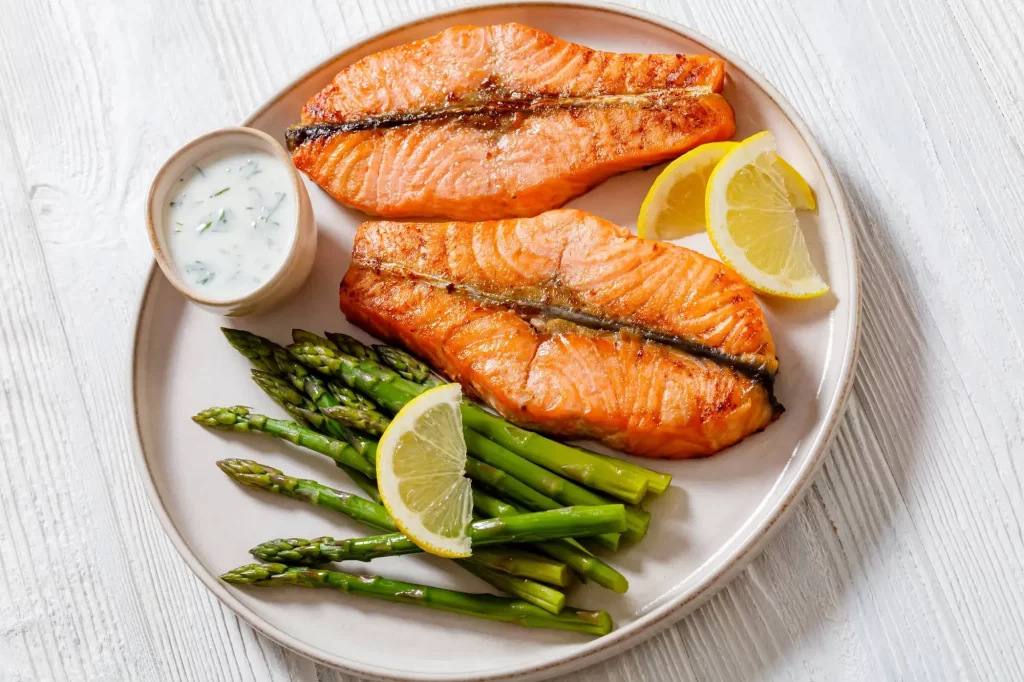
Many species of salmon (preferably wild caught) are great breakfast meats thanks to their healthy fat and protein content. Alaskan, Coho, Sockeye, and King salmon are among the best cuts of salmon you can have. All salmon varieties are low in calories (usually 400 calories per half pound) and are packed with nutrients like iron, potassium, and vitamin D.
Salmon has the highest omega-3 fatty acid content out of any meat on this list. Omega-3’s are important for proper brain function and heart health, and they lower the chances of stroke and cardiovascular disease. Additionally, the fish oil found in salmon is beneficial for skin health, eye health, and fetal development during pregnancy.
In terms of protein, every cut of salmon is great for protein, but sockeye and Atlantic salmon lead the pack. They contain upwards of 35-50g of protein for every half-pound.
One of the best aspects of salmon cooking is that their flesh is very forgiving; you can eat them either raw or cooked. This gives you a lot more free reign over how long you cook it for and when to serve it. When cooking salmon over a cast iron skillet, you should cook both sides until they have a whitish-pink hue, but it’s ok to leave a little bit of red inside. Salmon’s high-protein, low-calorie, and heart healthy fat contents make it a valuable addition on this list.
Turkey
There are many cuts of turkey, each providing their own pros and cons. All forms of turkey, however, are very high in protein, making it a desirable option for bodybuilders.
Sliced charcuterie turkey is one of the most popular to use for breakfast. This is because you can put slices in a sandwich with egg, cheese, and mayo. A breakfast sandwich made this way will give you a great amount of clean, quality protein.
Turkey bacon is an underrated cut of turkey and goes great with sunny-side up eggs. It is a low-fat, low-carb alternative to oily meats like bacon. It is a highly favorable protein source if you love bacon but want to avoid the potential heart problems that come with it.
Overall, turkey is a low-sugar, low-fat cut of meat that works great as a healthy breakfast meat.
Beef Steaks
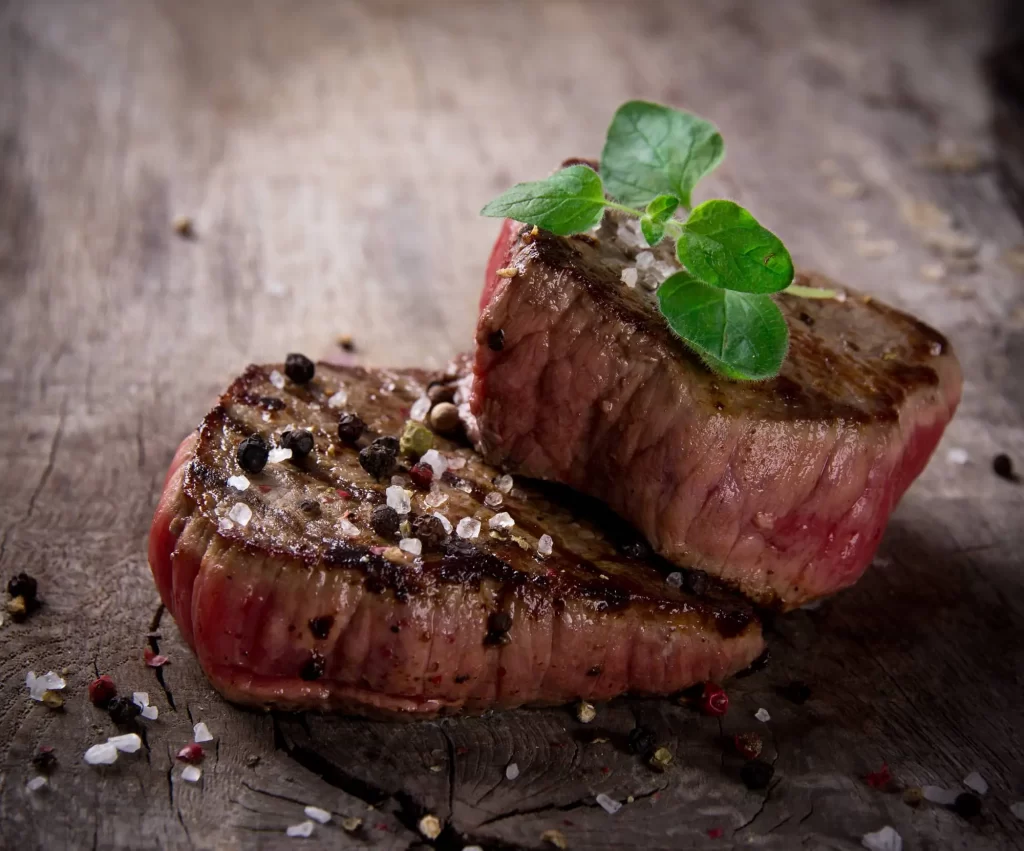
Nice, thin cuts of grass-fed beef can be a quality source of morning protein. Beef steaks are rich in iron, creatine, vitamin B, selenium, zinc, and many other vitamins. Steak + eggs is a common breakfast pairing that bodybuilders use, and steaks also pair very well with veggies to make a paleo-centered meal.
Thin-sliced steak and top sirloin are great, lean cuts, although you can use other fatter cuts like New York strip and chuck steak as well. You can season your steak with ingredients like peppercorn, ground herbs, onion, garlic, and salt for more flavor. I don’t recommend layering butter on your steak as it can add a lot of unnecessary calories and saturated fat. Steak pairs well with eggs, vegetables like broccoli and baked potatoes, and fruits like strawberries and cantaloupe. Lean steak cooks best on the stove and fatter steaks cook best on the grill. Baking your steaks in an oven also works well.
As stated earlier, always make sure you buy beef from reputable, USDA approved lenders. Healthy, clean beef should have no antibiotics, preservatives, steroids, or other harmful products. What’s also important is to always let your beef heat to a minimum internal temperature of 140°F (60°C) while cooking or grilling.
Corned Beef Hash
Corned beef, when made from scratch, has a nice amount of fibers and protein, and tastes great. You can layer it with spices, herbs, and veggies to make it a truly satisfying meal.
However, you need to take precautions before eating it if you care about eating healthier. First off, make sure you create your corned beef hash from scratch instead of buying canned versions in the store. Canned corn beef hash can be extremely high in fats, sodium, and calories, all of which are very detrimental for any weight loss routine.
Secondly, corned beef hash is usually eaten with potatoes, which may be high in carbs. Use gold potatoes if you want more vitamins and minerals in your beef hash, like iron and calcium. On the other hand, use red potatoes if you want less carbs and calories. Or, you can do a mix of both to make your corned beef hash more well-rounded.
The most important thing to keep your corned beef hash healthy is to make it from scratch so you can control the calorie, sodium, and fat content. Choose healthy toppings and add-ons such as carrots, onions, and garlic. When made right, corned beef hash is one of the best high protein breakfast foods out there.
Chicken Tenders

Grilled and baked chicken have a reputation for being among the greatest protein sources you can find. They usually work best as a post-exercise dinner, which can easily give you over 70 grams of lean, quality protein.
I wouldn’t recommend eating large cuts of chicken like breasts or thighs for breakfast, because their lean protein content is better suited for post-workout muscle building. However, if you want chicken for breakfast, try eating chicken tenders instead. They work better as a breakfast meat thanks to them having less calories, saturated fat, and more fiber than other cuts of chicken. You can pair them with other foods like salads and waffles to give you a better, more satiating balance of fiber and protein.
Chicken tenders contain 18-19 grams of protein per serving. They also have a very high concentration of omega-3 and omega-6 fatty acids. Compared to chicken breast, tenders have slightly less unsaturated fat and nutrients, and slightly more calories per pound, but are usually cheaper and faster to make. These major differences between the two are quite negligible.
You can make crispy, golden chicken tenders taste great by using an air fryer or by putting them in the oven. When buying bagged chicken tenders in a grocery store, be careful not to buy them fried, or else they may cause heart problems and weight gain. To make them homemade, buy raw chicken tenderloins in a grocery store and coat them in a nice, powdery layer of breadcrumbs.
If you’re smart, you can bread your chicken tenders in finely riced cauliflower instead of wheat. Doing this not only makes your tenders gluten-free and paleo-friendly, but also adds healthy vitamins and minerals such as vitamins C, K, B6, and folate. To summarize, chicken tenders are a better breakfast food than large cuts like breasts, thighs, or drumsticks, and they offer you a healthy balance between fiber and protein.
Lean Ham
In terms of lean, high-quality meat sources, ham may be one of the most reliable. However, it’s easy to fall into the trap of buying processed ham, most of which are plagued with additives and excess sodium. Make sure your ham is healthy by buying it from reputable suppliers, and always ensure your ham is free from MSG, hormones, nitrites, nitrates, and antibiotics. Aim to buy ham natural as opposed to processed.
That being said, sliced ham is one of the most convenient breakfast meats, as you can easily slide it into a ham and cheese sandwich and have a delicious breakfast. Heritage pork ham and bacon can also be good choices, as well as sugar-free bacon. Grass-fed and heritage pork are excellent sources of protein, niacin, vitamin B, selenium, and iron.
Cooked Shrimp
When it comes to seafood that’s low in calories yet high in protein, shrimp is among the best. It is quite easy to buy shrimp since most sizes are quite cheap and sold already cooked. They are simple to eat for breakfast because they work as finger food that you can dip into sauces like tartar and cocktail. They go great with other breakfast main courses and should be treated as a side dish because of their small size.
Either buy shrimp that’s already cooked or cook raw shrimp at home. People usually prefer the latter because when you cook your own raw shrimp, you have the option to use oils and seasonings. Going further, you can bread your shrimp with bread crumbs or riced cauliflower to give your shrimp a flavor punch.
When storing shrimp, freezing them is highly recommended to keep them as fresh as possible.
Lamb
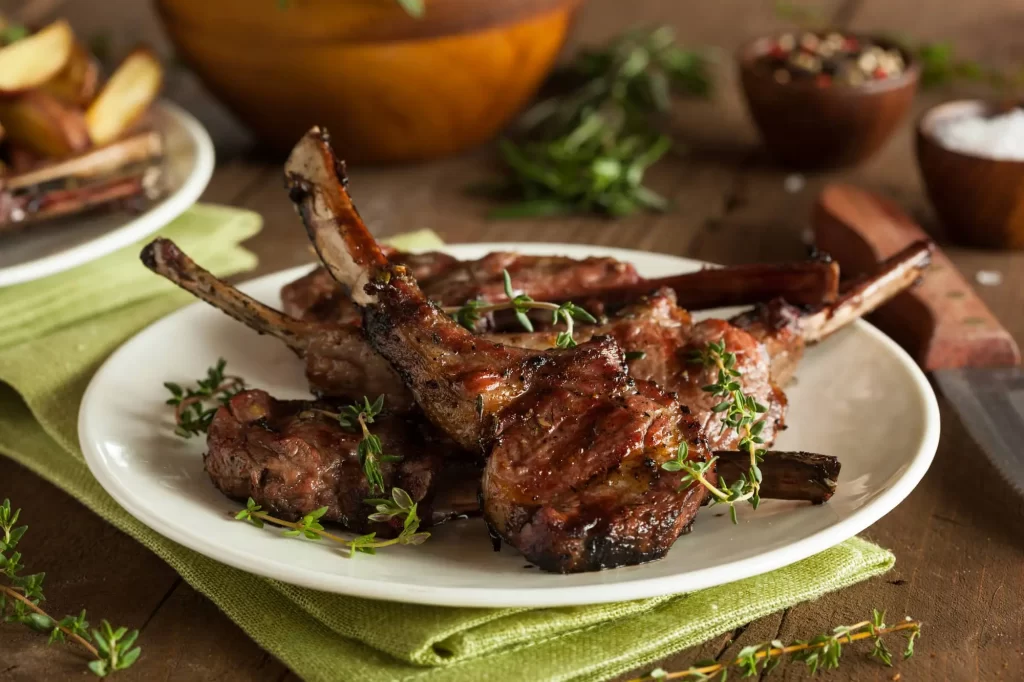
Lamb meat is quite similar to beef, but has a milder flavor. As a breakfast meat, it tends to fare well thanks to it being easy to cook and low in calories. Like all the other meats, it has plenty of protein, and it is a fantastic alternative to beef steaks.
A half-pound of lamb meat contains a whopping 70 grams of protein as well as many vitamins and minerals. Even with just a 3 ounce serving of lamb, you can get a hefty amount of nutrients. Lamb contains vitamin B12, zinc, niacin, riboflavin, vitamin B6, phosphorus, selenium, iron, and more. Lamb is definitely an underrated type of meat and works well with many other foods.
The most common cut of lamb is lamb chop. Chops are small, easy to grill and season, and work great in a party setting. You can cook them with the bone or without the bone, but bone-in is typically better since it retains the lamb’s flavor more nicely. Try eating chops through a skewer and some marinade; lamb tastes great as a shish kabob. You can decorate it with bell peppers, onion layers, and thick vegetables like broccoli.
Conclusion
There are multiple ways to eat healthy breakfast meats in the morning. Whether you eat cattle or seafood, you can always expect to eat a meal that is high in protein, fiber, vitamins and minerals. The majority of the healthy breakfast meats listed in this article are protein-rich but low in fats and calories, so it is a good idea to pair these meats with fiber-rich foods like oatmeal and vegetables. That way, you have one meal that gives you a ton of protein and the other will be able to satisfy your hunger throughout the day.
For all the meat species listed, especially pork, it is important that you make sure you buy natural, grass-fed meats. The less processed your meat is, the less likely it will be to give you complications such as heartburn, stomachaches, and dehydration (mostly due to the excessive sodium content). Be wise and buy your meat from reputable suppliers, or raise your own group of healthy, enriched animals. Meat is great to have for dinner, but there is no rule against including it as part of a balanced breakfast!
